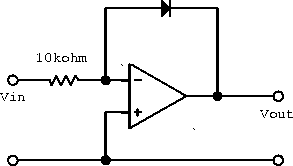
Figure 8.10: Operational amplifier with diode in feedback.

- What must the JK inputs of the first flip-flop be connected to for the circuit to ``count''?
- What must the SR inputs be connected to for the flip-flop output to be well defined?
- Determine the truth table and decimal output for the synchronous counter.
- Using clocked D-latchs, design a divide-by-4 ripple through counter.
- Using clocked JK flip-flops, design a divide-by-4 synchronous counter.
- For the synchrnonous divide-by-4 up counter, add appropriate gating so that it may be made to count down by using a mode control signal.
- In block diagram form, draw the simplest circuit that can multiplex 16 parallel lines, transmit serially and then demultiplex back into 16 lines. You should build your multiplexer and demultiplexer using parallel-to-serial and serial-to-parallel shift registers, and anything else you think you need.
- How may lines between the multiplexer and demultiplexer are needed?